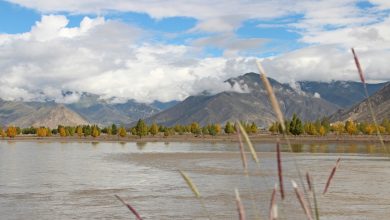Researchers propose age of Moon's oldest impact basin, uncovering its ancient impact history

Scientists believe they could have pinpointed the age of the largest and oldest impact basin on the Moon to over 4.32 billion years ago.
The Moon, like the Earth, has been bombarded by asteroids and comets since its formation, leaving behind craters and basins. However, the exact timing and intensity of most of these events, notably the oldest and largest basin on the Moon, have remained unclear to scientists—until now.
By analysing a lunar meteorite known as Northwest Africa 2995, a team led by scientists at The University of Manchester have investigated the age of the formation of the massive South Pole-Aitken (SPA) basin – the Moon’s oldest confirmed impact site, which is located on the far side of the Moon and stretches more than 2,000 kilometres.
The proposed date is around 120 million years earlier than what is believed to be the most intense period of impact bombardment on the Moon.
The finding, published today in Nature Astronomy, provides a clearer picture of the Moon’s early impact history.
Dr Joshua Snape, Royal Society University Research Fellow at The University of Manchester, said: “Over many years scientists across the globe have been studying rocks collected during the Apollo, Luna, and Chang’e 5 missions, as well as lunar meteorites, and have built up a picture of when these impact events occurred.
“For several decades there has been general agreement that the most intense period of impact bombardment was concentrated between 4.2-3.8 billion years ago – in the first half a billion years of the Moon’s history. But now, constraining the age of the South-Pole Aitken basin to 120 million years earlier weakens the argument for this narrow period of impact bombardment on the Moon and instead indicates there was a more gradual process of impacts over a longer period.”
The Northwest Africa 2995 meteorite was found in Algeria in 2005 and is what geologists refer to as a regolith breccia, which means it contains fragments of different rock types that were once a lunar soil and have been fused together by the heat and pressure involved in an impact event.
By analysing the amount of uranium and lead found in a range of mineral and rock fragments within the meteorite, the researchers were able to determine the materials dated back to between 4.32 and 4.33 billion years ago.
The team, which included The University of Manchester, the Institute of Geology and Geophysics – Chinese Academy of Sciences in Beijing, the Swedish Museum of Natural History in Stockholm, and the University of Portsmouth, then compared these results to data collected by NASA’s Lunar Prospector mission, which orbited the Moon studying its surface composition between 1998 and 1999. The comparison revealed many chemical similarities between the meteorite and the rocks within the SPA basin, confirming their link and enabling the new age estimate.
Dr Romain Tartese, Senior Lecturer at The University of Manchester, said: “The implications of our findings reach far beyond the Moon. We know that the Earth and the Moon likely experienced similar impacts during their early history, but rock records from the Earth have been lost. We can use what we have learnt about the Moon to provide us with clues about the conditions on Earth during the same period of time.”
This new understanding opens new avenues for future lunar exploration.
Professor Katherine Joy from The University of Manchester, said: “The proposed ancient 4.32 billion year old age of the South Pole-Aiken basin now needs to be tested by sample return missions collecting rocks from known localities within the crater itself.”




